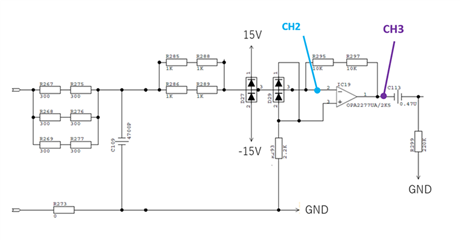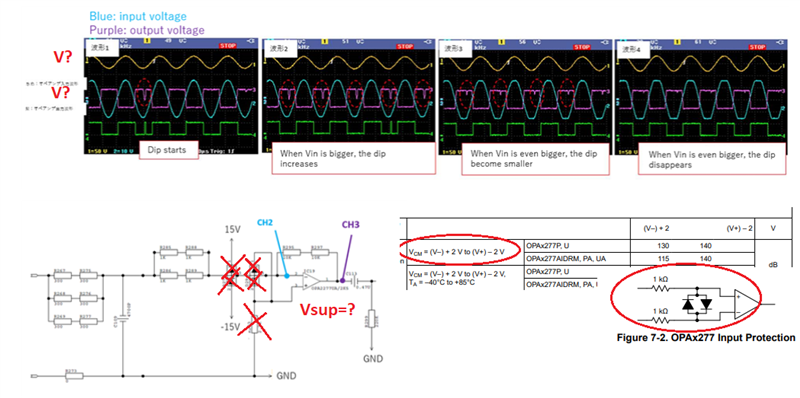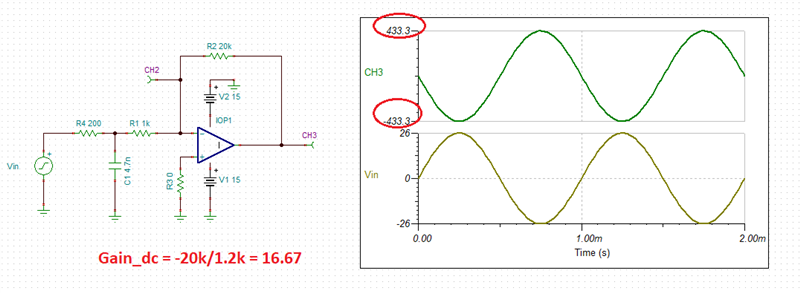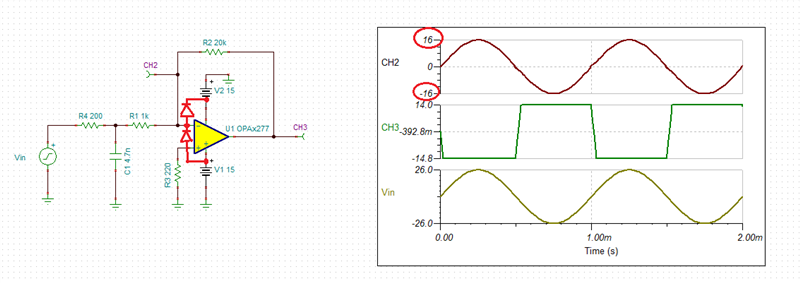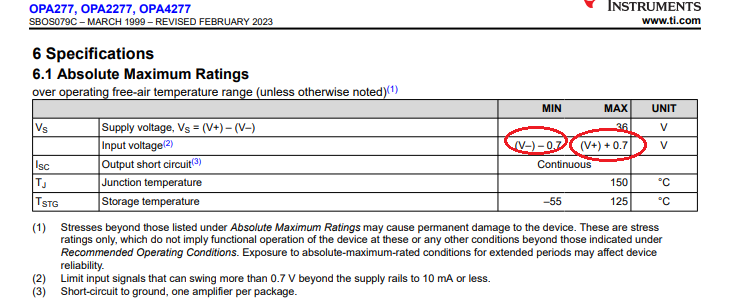Other Parts Discussed in Thread: OPA277, TINA-TI
Hi team,
My customer is using OPA2277UA/2K5 and has confirmed below phenomenon. It seems that there is a dip in the output due to the reverse phase.
Could you kindly answer to the questions below?
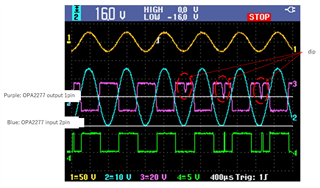
It seems that the above phenomenon is caused by the reversed phase of the op amp.
They have guessed that the conditions that the reverse phase happens are:
①when VIN is greater than or equal to the specified value for Vin (VCM: VCC +/- 2)
②when output is saturating
Is it the "AND condition of ① ② (phase reversal occurs with both)?
Or is it an "OR condition" of ① ② (phase reversal occurs with either case)?
Could you tell us when this happens?
Regrds,
Ohashi




